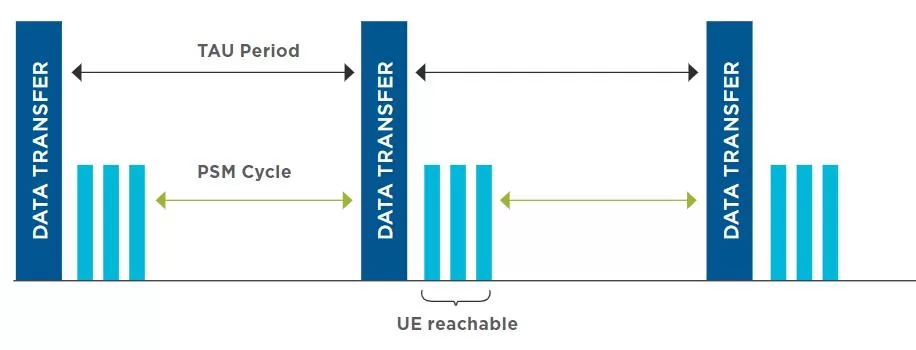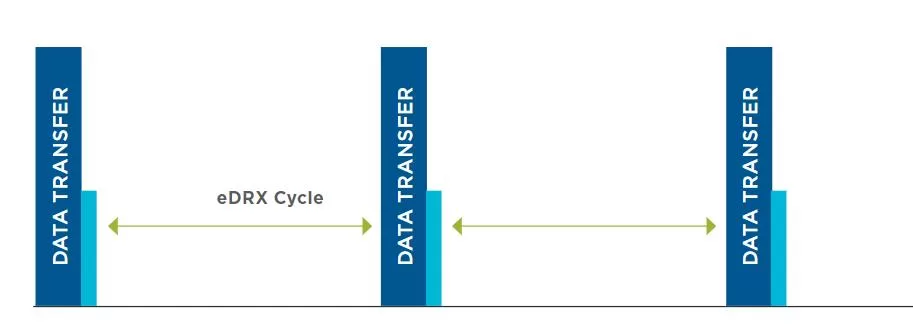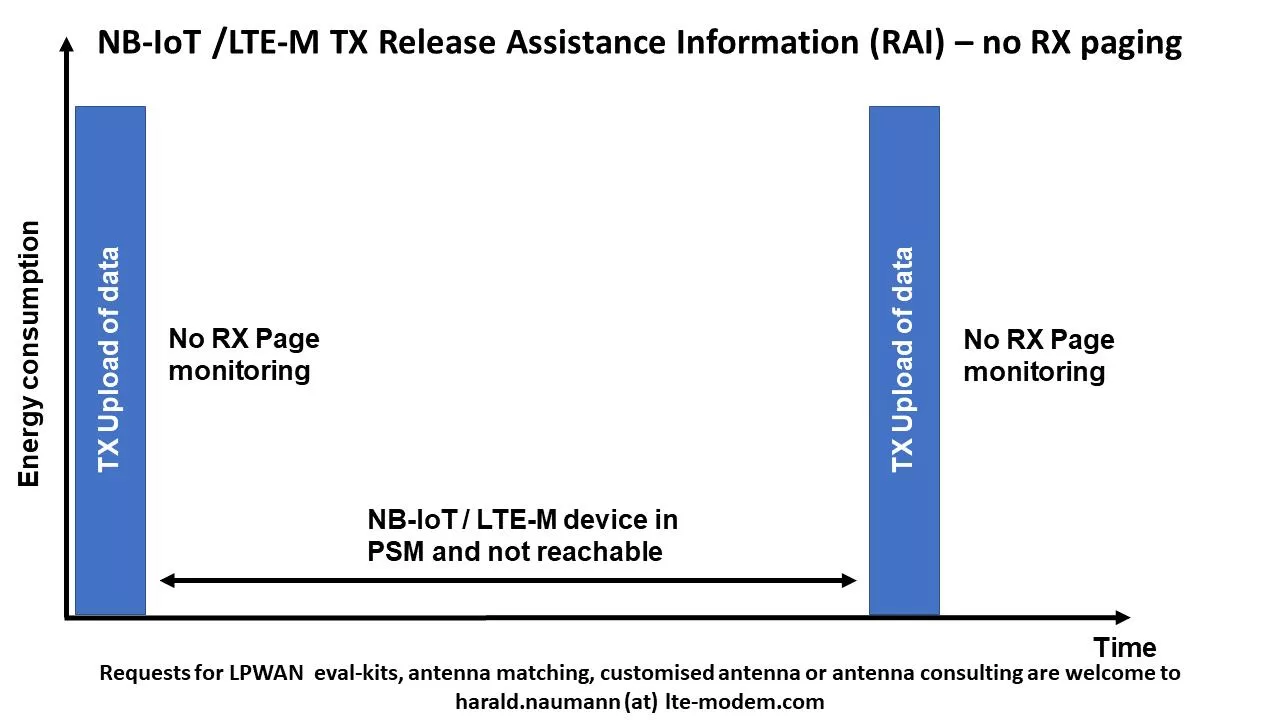Narrowband IoT (NB-IoT) is a Low Power Wide Area Network (LPWAN) technology that enables efficient and secure communication for IoT devices. One of the key advantages of NB-IoT is its low power consumption, which enables devices to operate on battery power for extended periods. However, to achieve maximum battery life, it’s essential to optimize power consumption in the device. In this article, we’ll take a deep dive into the power saving modes available in NB-IoT devices and explore strategies for achieving low power consumption while maintaining reliable communication.
Introduction:
The widespread adoption of the Internet of Things (IoT) has led to an exponential increase in the number of devices connected to the internet. However, most of these devices are battery-powered, and their power consumption is a crucial factor that determines their longevity and functionality. In this context, the emergence of Low Power Wide Area Network (LPWAN) technologies such as NB-IoT has revolutionized the way IoT devices communicate, offering low power consumption, extended coverage, and high device density.
Energy consumption in NB-IoT
NB-IoT technology is designed to provide low-power wide area network (LPWAN) connectivity for IoT devices. This means that NB-IoT devices have very low power consumption compared to traditional cellular devices, which enables them to operate on a single battery charge for years.
The power consumption of an NB-IoT device depends on several factors such as network conditions, device capabilities, and application requirements. Table 1 shows some of the key parameters that affect the power consumption of an NB-IoT device and their typical values.
Table 1: NB-IoT Power consumption parameters
| Parameter | Typical Value |
| Transmit power | 20-23 dBm |
| Receiver sensitivity | -129 to -139 dBm |
| Data rate | 20-250 kbps |
| Sleep current | 2-3 uA |
| Idle current | 6-12 mA |
| Active current | 150-180 mA |
It is evident from the presented table that the power consumption of an NB-IoT device is subject to considerable variation based on its mode of operation. Consequently, in the following section, we will delve deeper into the available power saving modes in NB-IoT devices and examine their potential for optimizing power consumption.
Transmission modes
In NB-IoT, there are two transmission modes: uplink and downlink. Uplink refers to data transmission from the device to the network, while downlink refers to data transmission from the network to the device. In general, uplink transmission consumes more power than downlink transmission due to the higher power required for radio transmission.
Packet sizes and data rates
Packet sizes and data rates can also impact power consumption in NB-IoT devices. Smaller packet sizes and lower data rates can reduce power consumption by reducing the time required for data transmission. However, smaller packet sizes and lower data rates can also result in higher latency and lower data throughput.
In NB-IoT, the maximum packet size and data rate depend on the specific configuration of the device and the network. IoT device manufacturers can optimize power consumption by choosing packet sizes and data rates that balance latency, data throughput, and power consumption.
Retransmission and error handling
Retransmission and error handling can also impact power consumption in NB-IoT devices. Retransmission occurs when data is not successfully transmitted, and the device needs to resend the data. Retransmission can consume additional power and increase latency.
Error handling refers to the process of detecting and correcting errors in data transmission. The error handling mechanism used can impact power consumption. For example, using a more complex error correction mechanism can result in lower error rates but higher power consumption.
In conclusion, data transmission is an important factor that affects power consumption in NB-IoT devices. By optimizing transmission power, packet sizes and data rates, and error handling mechanisms, IoT device manufacturers can design devices that meet the specific communication requirements of their use cases while maximizing battery life.
Power saving modes in NB-IoT devices
Narrowband IoT (NB-IoT) devices typically operate on batteries with limited capacity, making power consumption optimization crucial. Power saving modes are one way to achieve this goal. In NB-IoT, there are three power saving modes available: Power Saving Mode (PSM), extended Discontinuous Reception (eDRX), and RRC Inactive (RAI).
Power Saving Mode (PSM)
PSM is the most used power saving mode in NB-IoT. It allows the device to enter a deep sleep mode where it turns off most of its functions and only wakes up periodically to check for incoming messages. The wake-up interval is set by the network and can be up to 10.24 seconds. The device remains in this deep sleep mode until the next scheduled wake-up time, regardless of whether there is any incoming data.

PSM is ideal for use cases where the device only needs to send or receive data periodically, such as remote metering or environmental monitoring. PSM offers significant power savings as the device is not active most of the time. However, the downside is that the latency for sending or receiving data can be high, as the device needs to wake up from deep sleep to communicate with the network.
Extended Discontinuous Reception (eDRX):
eDRX is another power saving mode in NB-IoT that allows the device to enter a sleep mode while still monitoring the network for incoming data. In eDRX, the device can extend the time it remains in the sleep mode before waking up to check for incoming data. This extension is called the “eDRX cycle” and can range from 1.28 seconds to 40.96 seconds, depending on the network configuration.

eDRX is suitable for use cases where the device needs to receive data more frequently than in PSM, but still not constantly. For example, in smart parking systems where the device needs to receive data periodically to check for available parking spaces. eDRX can offer better latency than PSM as the device is still monitoring the network for incoming data while in sleep mode.
RRC Inactive (RAI):
RAI is the most power-efficient mode in NB-IoT, as it allows the device to turn off all radio functions and enter a complete sleep mode. The device only wakes up at pre-defined intervals to check for incoming messages, and the wake-up time is typically longer than in PSM or eDRX. The network can also configure a maximum duration for the sleep mode to ensure the device remains connected to the network.
RAI is ideal for use cases where the device only needs to send or receive data once or twice a day, such as in asset tracking or smart agriculture. However, the downside of RAI is that the latency for sending or receiving data can be very high, as the device needs to wake up and re-establish the connection with the network each time.

In conclusion, power saving modes in NB-IoT devices offer different tradeoffs between power consumption and latency.
Table 2: Power saving modes in NB-IoT devices
| Mode | Description | Power consumption mW) | Latency (ms) | |
| PSM | Puts the device into a deep sleep mode when it is not actively transmitting or receiving data. | 0.1 – 1 | 2 – 10 | |
| eDRX | Extends the sleep duration of the device to reduce power consumption. | 1 – 10 | 50 – 1000 | |
| RAI | Allows the device to release the radio resources after transmission to save power. | 5 – 50 | 10 – 100 |
Note that these values are approximate and can vary based on several factors such as network conditions, device capabilities, and application requirements. The actual power consumption and latency for a specific implementation may differ from these values.
By understanding the technical details of each mode and selecting the appropriate mode based on the device’s communication requirements, IoT device manufacturers can design low-power NB-IoT devices that offer extended battery life and reliable communication. In the next section, we will discuss how wake-up schedules can further optimize power consumption in NB-IoT devices.
Wake-up schedules and power consumption
While power saving modes in NB-IoT devices can significantly reduce power consumption, the wake-up schedule also plays a crucial role in optimizing power consumption. Wake-up schedules define when the device wakes up from sleep mode to check for incoming messages. The wake-up schedule can be controlled by the device or the network, depending on the power saving mode used.
Device-controlled wake-up schedules
In PSM and eDRX modes, the device can control the wake-up schedule by sending a request to the network. The network then sends a response with the requested wake-up schedule. The device can also adjust the wake-up schedule based on its communication requirements. For example, if the device needs to send or receive data more frequently, it can request a shorter wake-up interval.
Device-controlled wake-up schedules can offer better power consumption optimization as the device can adjust the wake-up schedule based on its specific communication requirements. However, the downside is that it requires additional communication between the device and the network, which can increase power consumption.
Network-controlled wake-up schedules
In RAI mode, the network controls the wake-up schedule. The device enters a complete sleep mode and wakes up at pre-defined intervals to check for incoming messages. The network can configure the wake-up interval and the maximum duration of the sleep mode to ensure the device remains connected to the network.
Network-controlled wake-up schedules offer the best power consumption optimization as the device does not need to communicate with the network to adjust the wake-up schedule. However, the downside is that the device has less control over its communication requirements, which can result in higher latency.
Tradeoffs between wake-up schedules and power consumption
The wake-up schedule plays a crucial role in power consumption optimization. A shorter wake-up interval can reduce latency but increase power consumption, while a longer wake-up interval can reduce power consumption but increase latency. The tradeoff between power consumption and latency depends on the specific use case and communication requirements of the device.
For example, in a smart city application where the device needs to detect and report air quality data, a shorter wake-up interval may be necessary to ensure timely data reporting. On the other hand, in an asset tracking application where the device only needs to report location data once a day, a longer wake-up interval may be more appropriate to reduce power consumption.
In conclusion, wake-up schedules are a critical component of power consumption optimization in NB-IoT devices. By understanding the tradeoffs between wake-up intervals and power consumption, IoT device manufacturers can design devices that meet the specific communication requirements of their use cases while maximizing battery life.
Optimizing Power Consumption in NB-IoT Devices:
To optimize power consumption in NB-IoT devices, it’s essential to select the appropriate power-saving mode based on the device’s communication requirements. The following are strategies for optimizing power consumption in NB-IoT devices:
- Selecting the appropriate power-saving mode: Choosing the appropriate power-saving mode based on the device’s communication requirements is crucial. For example, if the device needs to conserve power while maintaining low latency, the PSM mode may be the best choice. However, if the device can tolerate higher latency, the idle mode may be more suitable.
- Optimizing wake-up schedules: Optimizing the wake-up schedule is essential to achieve low power consumption and maintain reliable communication. For example, if the device expects messages at regular intervals, it’s more power-efficient to wake up periodically than to remain connected to the network.
- Minimizing data transmission: Minimizing data transmission is another way to optimize power consumption in NB-IoT devices. By reducing the amount of data transmitted, the device can reduce the number of times it needs to wake up and communicate with the network, leading to lower power consumption.
- Power control mechanisms: Power control mechanisms can help optimize power consumption in NB-IoT networks by adjusting the transmission power level based on the network conditions. For example, if the device is close to the base station, it can transmit data using lower power levels, reducing power consumption while maintaining reliable communication.
Conclusion:
In conclusion, optimizing power consumption in NB-IoT devices is crucial to achieve maximum battery life and reliable communication. The available power saving modes in NB-IoT devices offer different tradeoffs between power consumption and latency, and selecting the appropriate mode based on the device’s communication requirements is essential.
3GPP Release 15 outlines various functionalities aimed at reducing system acquisition time. Upon exiting a PSM or DRX sleep mode, the UE commonly requires resynchronization with the network to establish time and frequency synchronization, owing to clock drift in the UE. To facilitate rapid time and frequency synchronization and conserve power, a newly developed resynchronization signal (RSS) has been introduced. Compared to the legacy PSS/SSS, which is still necessary for initial synchronization with a new cell, the RSS is denser in time and frequency. The use of RSS has the potential to reduce power consumption by up to 98%.

